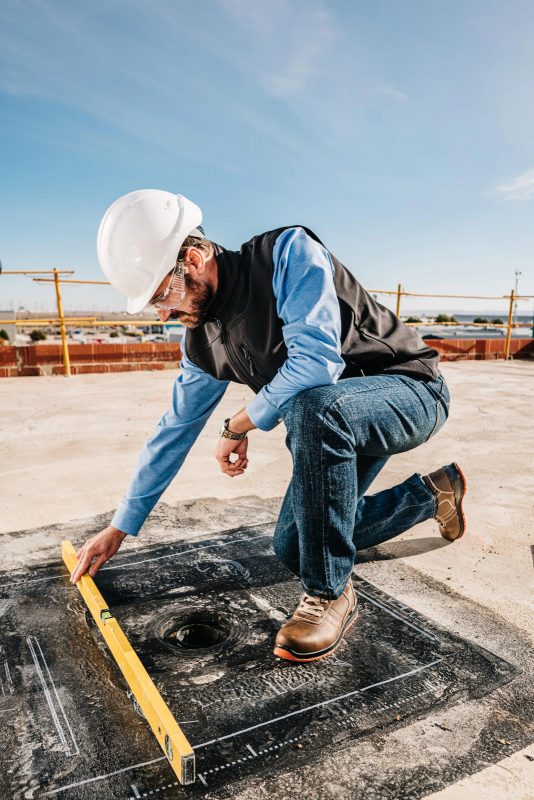Tendencias de ropa de trabajo para 2025
In a working world in constant evolution, the garments professionals because they are not content with offering protection. They are becoming tools of performance, communication and even sustainable development. In 2025, the trends in costumes work will focus on three key areas: technical innovation, eco-responsibility and comfort adaptive. Here is a summary of the major trends that you need to know to equip their teams effectively and sustainably.
1. Technical innovation: when the technology reaches the textile
In 2025, the growing integration of the technology by the part of the clothing manufacturers professional aims to optimize the performance and security of the workers.
- Smart Textiles: The use of textiles that react to the temperature, the humidity, or the light is becoming more and more common.
For example, some jackets are automatically adjusted to the temperature outside. - Clothing connected: can be integrated sensors into clothing to monitor vital signs or to detect a fall, which is very useful for isolated workers.
- Fire retardant fabrics and cut-resistant new generation: more light and flexible, these materials allow greater freedom of movement without compromising protection.
This technology is part of a focus on prevention, reduction in accidents and increase productivity.
2. Sustainability and commitment to the ecorresponsabilidad
Companies are increasingly aware of the environmental impact of its operations, also in the selection of work uniforms.
- Recycled and recyclable materials: Recycled polyester, organic cotton, algae and hemp fibers are appearing in the collections of 2025.
- Local production and supply chains short: More and more european brands opt for locally grown produce to reduce your carbon footprint and ensure better traceability.
- Eco-labels: GOTS, OEKO-TEX, Fair Wear Foundation are references to select garments that respect the environment and workers ' rights.
Invest in clothing sustainable means to reduce the frequent replacement of attire at the time that stated a clear commitment to CSR.

3. Comfort adaptable: to promote the well-being at work
In 2025, the trend is to improve the comfort in the actual conditions of work. The manufacturers are designing garments that are tailored to the needs of the professionals throughout their working day.
- Ergonomic design: the cuts are designed to promote movement without getting in the way. The pants with waistbands semielásticas, knees preformed and elastic inserts are becoming more common.
- Thermal management: The garments of several layers and textiles are breathable to help better manage the variations of temperature.
- Lightness and flexibility: use lighter materials without compromising the strength. This limits the muscle fatigue in the long journeys.
An employee is better equipped it is more efficient, more happy, and is less exposed to musculoskeletal disorders (MSDS).
4. Design and image professional modernized
Work clothing is not simply a uniform functional: it has become a vehicle of brand image.
- Modern colors and sober: charcoal grey, navy blue and khaki, combined with details of color that reflect the visual identity of the company.
- Cut city: body skimming, inspired in the streetwear, enhances the silhouette without compromising on mobility.
- Customization: logos, embroidery, patches of team, motivational messages... the clothing becomes a means of internal communication.
As a result, the professional clothing reflects the principles of the company and promotes a sense of belonging.

5. Versatility and modularity: one piece, number of uses
With the development of hybrid, work clothing is becoming more and more adaptable.
- Conjuntos modulares: chaquetas 3 en 1, pantalones que pueden transformarse en bermudas, prendas compatibles con diferentes accesorios.
- Look híbrido: prendas que se pueden llevar tanto en el trabajo como de viaje o en presentaciones a clientes.
- Trajes unisex: Cada vez son más los conjuntos diseñados para adaptarse tanto a hombres como a mujeres, con cortes universales.
This versatility reduces the need for stock, while satisfying a number of professional needs.
Conclusion: the costumes of work in 2025, between innovation and awareness
The costume work is constantly evolving to adapt to modern needs: performance, environmental responsibility, well-being and aesthetics. In 2025, it is possible to reconcile the style, sustainability and functionality.
To follow these trends, brands such as Combi Pro offer ranges adapted to the new needs of the professionals. Invest in quality clothing is to anticipate the expectations of tomorrow and enhancing the human capital of your company.
Who are we?
Welcome to Combi-Pro, the fate of the demanding pros looking for work clothes technique that combines quality, style and comfort. We are more than a company, we are a family dedicated to offering the best in work clothes. Our history: At the crossroads of tradition and innovation, Combi-Pro has built its heritage on the distribution of work wear and technique. Since our foundation in 2020, we have grown to become a leading name in work wear, corporate and textile promotional.


